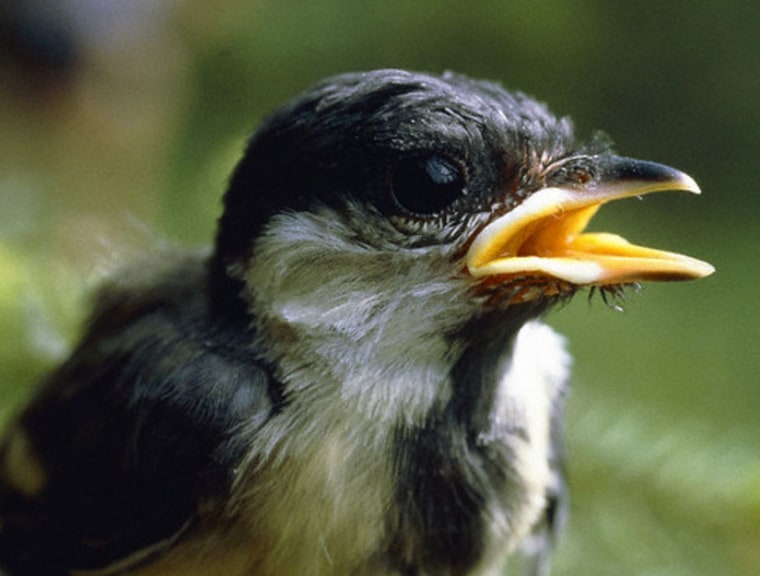When bombarded by noise pollution, some male birds begin to sing higher tunes, a new study has found. And that tonal shift makes them less attractive to females.
The findings suggest that birds must make difficult trade-offs in urban areas and places where traffic and industrial noises threaten to drown them out. Either they sing less appealing songs or tones in an effort to rise above the din, or they sing the songs that make them sound appealing at the risk of not being heard at all.
"If females can hear all song types equally well, they will go for the sexy ones, but if they cannot hear the sexy ones well anymore, then they might just go for the songs they can still hear," said Wouter Halfwerk, a behavioral ecologist at Leiden University in the Netherlands. "It could very well be that noise pollution is interfering with reproductive decisions by females."
Modern life has brought with it a rising hum of background noise, which tends to cluster within the low frequencies that many animals use to communicate. In recent years, researchers have been documenting all sorts of ways that cars, boats, industrial machinery and other noises have affected the behavior of many kinds of species, including birds.
In his previous work on a bird called the great tit, Halfwerk had found that exposing males to artificial traffic noise caused them to sing at higher frequencies. That made him wonder if these birds were managing to thrive by working around noise pollution. The other possibility was that shifting their songs was harming them in some way.
To find out, Halfwerk and colleagues started by recording the songs of 30 male birds on various days during their pre-dawn, springtime mating ritual in the Netherlands. Their results showed that males sang the lowest songs in their repertoires just before the females laid their eggs.
After the eggs hatched, the researchers then conducted paternity tests to see how many males were taking care of their own babies and how many had been duped at the last minute by females that snuck out after mating and mated again with someone else. Their results, published today in the Proceedings of the National Academy of Sciences, showed that males who sang the highest songs were most likely to be cheated on by their female mates.
Those two findings showed that the low-frequency songs are the most attractive to females. The results also suggested that males use their deepest, sexiest voices at the moment when it matters most.
In a final experiment, the scientists played recordings of high and low songs to females who were lurking in their nest boxes. When the environment was quiet, females emerged most often in response to low-pitched songs. But when the researchers pumped low-frequency noises into the background, females often responded instead to higher tunes.
Those results confirmed that noise pollution interferes with the birds' ability to communicate during their high-stakes mating games. Other research has shown that female great tits lay fewer eggs when they mate with high-singing males.
Great tits sing at higher frequencies than many other birds do, and they are fortunate in their ability to alter their songs when they need to. Not all species have such flexibility, Halfwerk said. Noise pollution might have an even bigger effect on those more rigid birds.
"If you have a species that sings very low songs, doesn't have a flexible repertoire, and might just sing simple songs or not be a song-learner, like a cuckoo or dove, there will be more overlap with background noise," Halfwerk said. "If you extrapolate these findings to other bird species, it's the frequency of the song that really matters in whether noise pollution affects attractiveness."
Previous studies have shown that a variety of birds can suffer when they change their songs, said Erin Bayne, an ornithologist at the University of Alberta. The new study is one of the first to explain why.
In so doing, Bayne said, the findings underscore the need to develop new technologies that would lower the volume of roads, industries and gas pumping stations — or at least reduce the amount of low-frequency noise that penetrates nearby forests. Rubberizing roads and retaining walls could help, for example, as could better planning about where to build roads through natural areas.
On the other hand, Bayne pointed out, noise ranks fairly low on the long list of threats for birds. Many more die from after losing their habitats or slamming into windows.
"It's definitely an issue, and a lot of roads make a lot of noise," Baybe said. "But I'm not sure if we only have limited dollars, that this is where I would put the money. It's just one of the many, many, many challenges facing birds."
